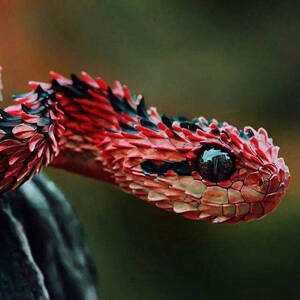Goniurosaurus bawanglingensis
IUCN
LCBasic Information
Scientific classification
- name:Goniurosaurus bawanglingensis
- Scientific Name:Goniurosaurus bawanglingensis,Bawangling Leopard Gecko,Chinese Tiger Gecko,
- Outline:Squamata
- Family:S.Lizard F.Gryphidae G.Gryph
Vital signs
- length:15-18cm
- Weight:No verification information
- lifetime:About 8 years
Feature
It is a species unique to Hainan, China.
Distribution and Habitat
The Bawangling eyelid gecko is a new species, endemic to China, distributed in Hainan. This gecko is rare and is only suitable for a well-ventilated and humid rainforest microenvironment. It is only distributed in the sand and cave environment at an altitude of about 500 meters in the Bawangling Nature Reserve on Hainan Island in my country.
Appearance
The tail is slightly shorter than the head and body. The back of the head is brown, and the trunk and tail are dark purple-brown, all stained with a few large black-brown spots. On this background, there are several white horizontal stripes with black edges in front and back. One is on the occipital part, slightly arc-shaped, and its two sides extend along the front of the head to the eyes; there are 3 stripes on the trunk: one behind the axilla, one in the middle of the body, and one in front of the crotch; there are 4-5 stripes on the tail. If the tail is broken and regenerated, there will be no stripes. The head is relatively large, covered with granular scales, with movable eyelids; there are anterior nasal scales, and the snout scales and the first upper lip scales do not cut the external nostrils. The trunk is thick, the back is covered with granular scales, and there are large cone-shaped warty scales in between; the ventral side is covered with large hexagonal scales. The tail
Details
Bawangling Leopard Gecko is a species unique to Hainan.

At around 9 p.m. on July 5, 2001, specimen collectors were waiting for nocturnal animals in the jungle of Bawangling. The flashlight illuminated a 10-centimeter-long gecko (Gecko), which was very different from the geckos they had seen in the past. Common eyelid geckos have a few rings and spots, simple colors, and are generally black. In addition to more ring patterns, this eyelid gecko also has a lot of clear spotted patterns, with mixed colors and patterns on the tail, and is generally yellow-brown.
The staff collected 7 such eyelid geckos in the same area. According to the identification of Professor Huang Zhengyi, an amphibian expert at Fudan University, this eyelid gecko is not the same species as the eyelid geckos found in the world today, and is a new species in the genus eyelid gecko. According to reports, there were 15 species of eyelid geckos in the world in 1998, and there were two species of eyelid geckos in China. The eyelid gecko found in Bawangling, Hainan this time has been named "Bawangling eyelid gecko".
The Bawangling eyelid gecko mainly feeds on termites. Because this species is colorful and non-aggressive, the demand for it in the pet market is increasing, and some people have begun to sell it.
Listed in the second level of the "List of National Key Protected Wildlife in China".
Listed in the "List of Priority Protected Species in Hainan Tropical Rainforest National Park" (official version).
Protect wild animals and eliminate game.
Maintaining ecological balance is everyone's responsibility!








